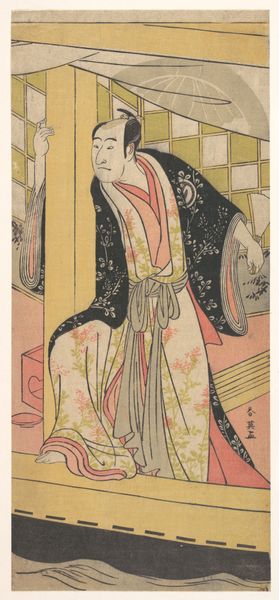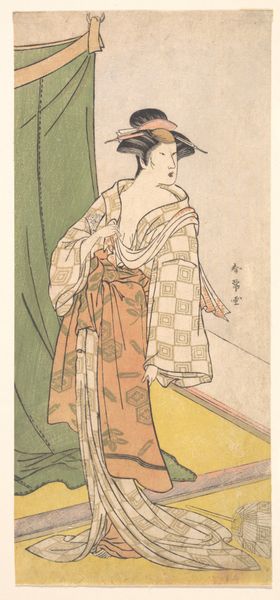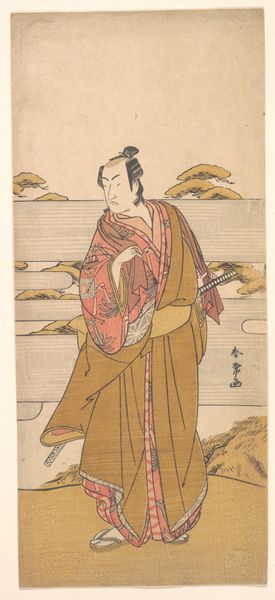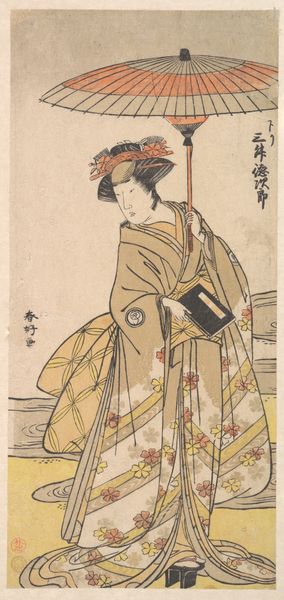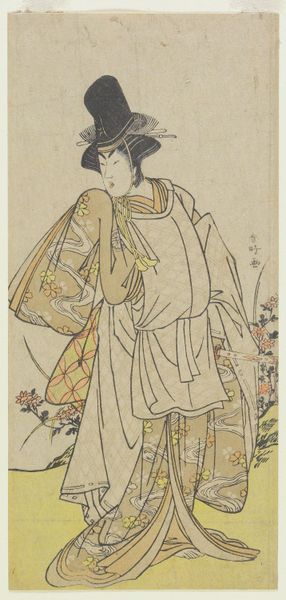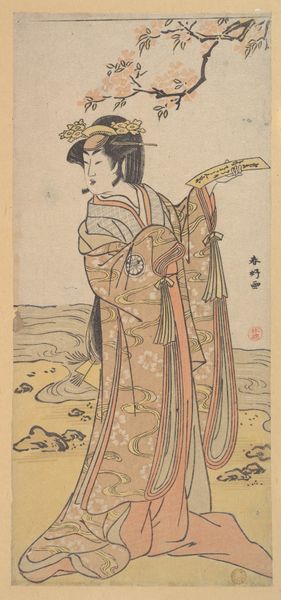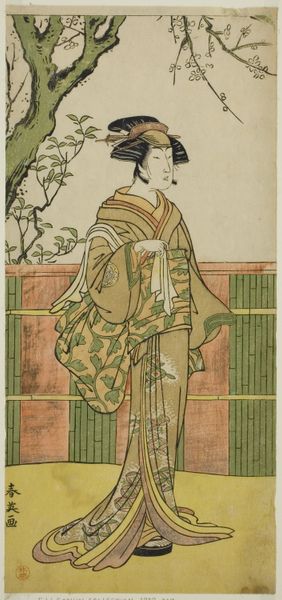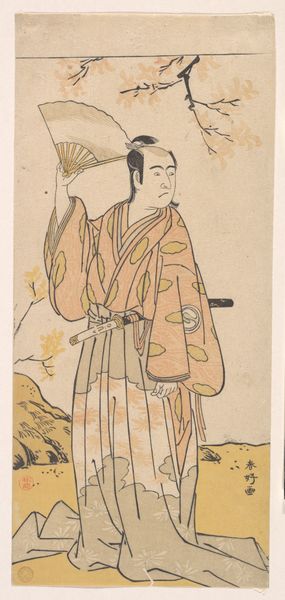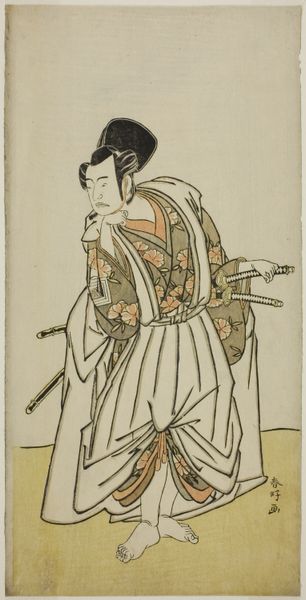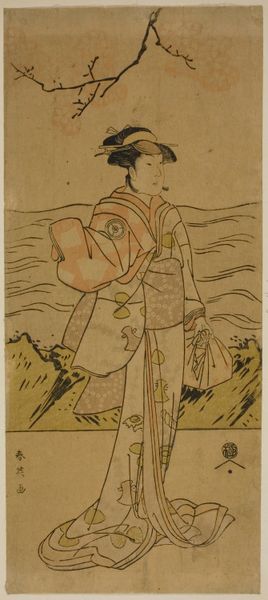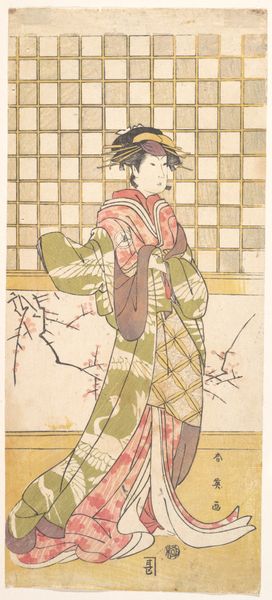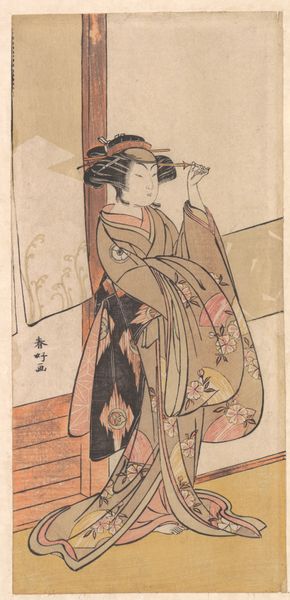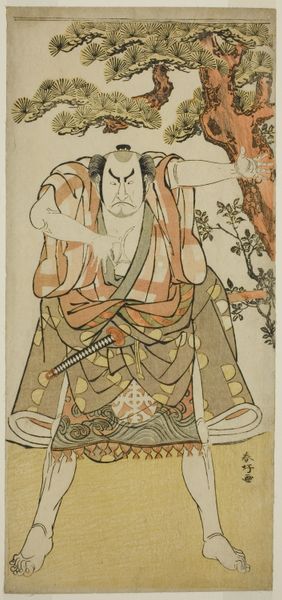
The Actor Ichikawa Monnosuke III as the Sumo Wrestler Shirafuji Genta in the Play Edo no Hana Mimasu Soga, Performed at the Nakamura Theater in the Third Month, 1783 c. 1783
0:00
0:00
print, woodblock-print
#
portrait
#
ink drawing
# print
#
asian-art
#
ukiyo-e
#
japan
#
woodblock-print
Dimensions: 32.4 × 14.8 cm (12 3/4 × 5 13/16 in.)
Copyright: Public Domain
Editor: So, this is "The Actor Ichikawa Monnosuke III as the Sumo Wrestler Shirafuji Genta in the Play Edo no Hana Mimasu Soga," a woodblock print from around 1783 by Katsukawa Shunshō. What immediately strikes me is how the patterned kimono clashes with the background, yet it's all so deliberately crafted. What can you tell me about this work? Curator: Well, first off, look at the materials: woodblock printing, specifically. Think about the labor involved—the carving of the blocks, the inking, the pressing. This wasn't a single artistic act but a process involving skilled artisans. Editor: So it's not just about Shunshō's design, but also about these artisans' roles? Curator: Precisely. The *ukiyo-e* genre was commercially driven, produced for a growing urban audience. These prints were essentially consumer goods, reflecting and shaping popular tastes. Note the emphasis on the actor’s identity, foregrounding his material presence within the theatrical production. It speaks to a culture obsessed with celebrity and representation. Notice too how this production method makes art accessible, far beyond an oil on canvas available only to wealthy patrons. Editor: So the accessibility changes its cultural value. The actor's portrayal here and how that’s presented materially via print influences taste or reflects taste? Curator: It's a cycle, isn't it? It both shapes and reflects it. This particular print would have circulated widely. Consumption here means visibility, contributing to both the actor's fame and the printmaker's livelihood, further solidifying woodblock printing as a dominant art form in Japanese society. Editor: Fascinating! It reframes how I think about these kinds of pieces, knowing it's about production, labor, and accessibility as much as it is artistic skill. Curator: Exactly! Thinking about the material conditions under which art is made, and consumed gives us a richer, more nuanced understanding of its significance.
Comments
No comments
Be the first to comment and join the conversation on the ultimate creative platform.
